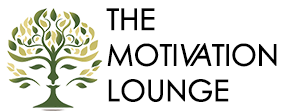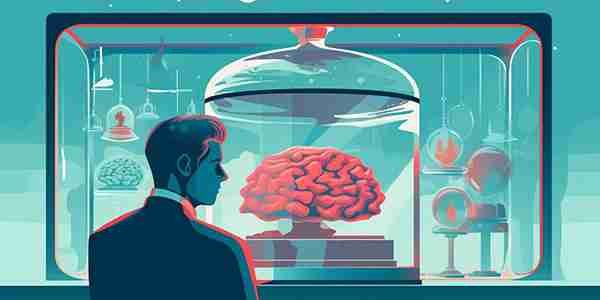Convergent and Divergent Thinking: Understanding the Differences and Importance
Convergent and divergent thinking are two cognitive processes that allow us to approach problems, develop ideas, and understand the world around us.
These two terms are often used in educational, scientific, and creative contexts. Even though both forms of thinking are essential for problem-solving, they differ in their approaches, processes, and outcomes. Understanding these differences is crucial for individuals who want to maximize their potential for creativity or find optimal solutions to problems.
Definition of Convergent Thinking
Convergent thinking is a cognitive process that aims to find a single correct answer to a problem or question. It involves narrowing down options to identify the most appropriate solution.
This type of thinking is usually associated with logical reasoning, analysis, and deduction. Individuals engage in convergent thinking when they try to answer standardized test questions or solve math problems.
In convergent thinking, there is often only one correct answer or solution. The focus is on finding this correct answer by limiting the number of possibilities; eliminating irrelevant information; and applying rules, logic, or algorithms.
Definition of Divergent Thinking
Divergent thinking is a cognitive process that aims to generate multiple ideas or solutions for a given problem or question. It involves expanding options through brainstorming, free association, imagination, intuition and other methods.
This type of thinking is usually associated with creative processes such as art-making or ideation sessions. In divergent thinking there can be several possible solutions which are not judged as right/wrong but rather evaluated based on how useful /appropriate/ novel they are for solving the given problem/question.
Convergent Thinking
Convergent thinking is creating a single, correct solution to a problem. It is a deductive reasoning process that involves narrowing down possibilities to reach the most appropriate answer. This type of thinking is often used in standardized tests and fields such as engineering, mathematics, and science.
During convergent thinking, individuals utilize their logical and analytical skills to solve by evaluating available information, eliminating irrelevant data, and selecting the most relevant facts. Convergent thinking requires focus and discipline to ensure that the outcome is accurate.
Examples of Convergent Thinking in Everyday Life
There are many examples of convergent thinking in our daily lives. For instance, when we’re trying to solve a math problem or answer a multiple-choice question on an exam, we’re engaging in convergent thinking. Another example would be when an engineer works on designing an efficient product that meets specific criteria or specifications.
In addition, businesses often employ convergent thinking when analyzing data or making financial decisions that require precise calculations for maximum profit. Even everyday tasks like creating grocery lists require convergent thinking: we must consider what we need for meals, check our pantry inventory for supplies we already have, and ensure it all fits within our budget.
Benefits and Limitations of Convergent Thinking
One benefit of convergent thinking is its ability to produce accurate results by following logical steps towards reducing possibilities to one correct answer. It can also help people make informed decisions based on factual evidence rather than relying solely on intuition or speculation.
However, there are some limitations associated with this thinking as well. For example, it does not encourage creativity or innovation because it relies heavily on predetermined facts instead of generating new ideas from scratch.
As a result, it may limit a person’s ability to consider alternative solutions that may be more effective or beneficial long term. Overall, while convergent thinking is an effective tool for solving problems and making decisions that require accuracy, it is essential to recognize the limitations and balance them with divergent thinking, encouraging creative solutions.
Divergent Thinking
Divergent thinking is a cognitive process used to generate creative ideas or solutions. It involves exploring many possible solutions to find one that works best.
Divergent thinkers are often described as “out of the box” thinkers who tend to come up with unique and unconventional ideas. This type of thinking is commonly associated with creativity and innovation, as it allows individuals to explore different possibilities and consider multiple perspectives.
Examples of divergent thinking in everyday life
Divergent thinking can be applied in many different situations, from problem-solving to artistic expression. For example, when brainstorming ideas for a new product, a divergent thinker would explore all possible options and consider a wide range of features or functions that could be incorporated into the design.
In creative fields like writing or art, divergent thinking may involve exploring multiple themes or approaches before settling on one that feels right. Another example of divergent thinking can be seen in the design process for transportation systems like highways or public transit networks.
Engineers must consider many factors when designing these systems, such as traffic patterns, environmental impact, safety concerns, and accessibility for different groups of people. By exploring multiple options and considering various trade-offs between these factors, engineers can create transportation systems that are efficient, safe, and accessible for everyone.
Benefits and limitations of divergent thinking
One key benefit of divergent thinking is that it allows individuals to explore various possibilities before settling on a single solution. This can lead to more creative ideas and innovative solutions than might be possible through convergent thinking alone.
Additionally, because divergent thinkers are often willing to challenge conventional wisdom and think outside the box, they may come up with breakthrough ideas that others overlook. However, there are also limitations to this type of thinking.
Because divergent thinking involves many possibilities, it can be time-consuming and may not always lead to a practical solution. Additionally, some individuals may struggle with generating multiple ideas or find it challenging to choose one idea from among many.
Divergent thinking can be less effective in situations where there is a clear and well-defined problem that requires a specific solution. In these cases, convergent thinking may be more helpful.
Differences between the Two
Convergent thinking involves narrowing down various possibilities to find the best solution for a problem. It focuses on finding the correct answer or solution through logical and analytical means by applying established rules or criteria.
It is more linear in nature as it follows a set path toward a particular goal. In contrast, divergent thinking is an open-ended process involving generating multiple solutions or ideas for a problem without preconceived notions or constraints.
It encourages free-flowing brainstorming sessions where any idea, no matter how unconventional, is considered to spark creativity and innovation. Divergent thinking often requires breaking away from traditional methods of approaching problems.
Similarities between the Two
Both convergent and divergent thinking are essential cognitive processes that help us navigate our everyday lives by providing efficient problem-solving methods while encouraging creativity and innovation. Moreover, both these processes require critical thinking skills such as analysis, synthesis, evaluation, inference, and deduction. Both also require an individual to possess knowledge about the subject matter at hand so they can use it to evaluate different solutions/ideas effectively.
How They Complement Each Other
While both types of thinking have advantages and limitations, combining them can bring substantial benefits as they complement each other’s strengths. Convergent thinking helps provide focus when it’s time to determine which options should be followed up on most effectively while eliminating those that aren’t practical or suitable. Divergent thinking generates many possible solutions, which can be further refined by converging them into better solutions by identifying common themes and patterns.
Converging ideas can fill possible gaps, making the solution more comprehensive and practical. Convergent and Divergent thinking offer unique perspectives in approaching problems and generating solutions.
They have significant differences that set them apart but also complement each other when used together. By understanding their differences and similarities, we can apply these concepts to improve our lives across different fields.
What About IQ?
Convergent thinking is a critical component in IQ tests, which aim to measure an individual’s intelligence by assessing their problem-solving abilities, logical reasoning, and critical thinking skills. In such tests, individuals are often presented with precise, well-defined problems with one correct solution. Convergent thinking is paramount in these situations, as individuals must dissect the problem, apply logical reasoning, and deduce the correct answer.
In contrast, divergent thinking plays a significant role in creative idea generation. This process involves brainstorming many potential solutions to a problem or visualizing various ways to complete a task. Unlike convergent thinking, divergent thinking encourages one to think beyond the conventional, considering all potential outcomes. This thinking is invaluable in art, design, and advertising—where creative problem-solving is necessary.
By understanding the unique roles and applications of convergent and divergent thinking, we can leverage these cognitive processes to enhance our problem-solving abilities, stimulate creativity, and make more effective decisions. So, the next time you’re confronted with a challenge, consider which type of thinking might be most beneficial and put it to the test!
Final Thoughts
Convergent and divergent thinking are two essential cognitive processes that are crucial in our daily lives. While convergent thinking helps find specific solutions to problems, divergent thinking encourages creativity and innovative ideas.
Understanding these different approaches can help us find innovative solutions to complex issues. Incorporating both types of thinking into our daily routines or educational systems opens up the opportunity for more effective problem-solving approaches across all fields, such as business or creative industries where innovation is critical.
Developing these skills early on in education will help future generations think critically about complex issues facing society today. It’s important to remember that each type of thinking has its strengths and limitations. Still, by combining the two methods, we can create a more practical approach to tackling challenges in our personal or professional lives!





